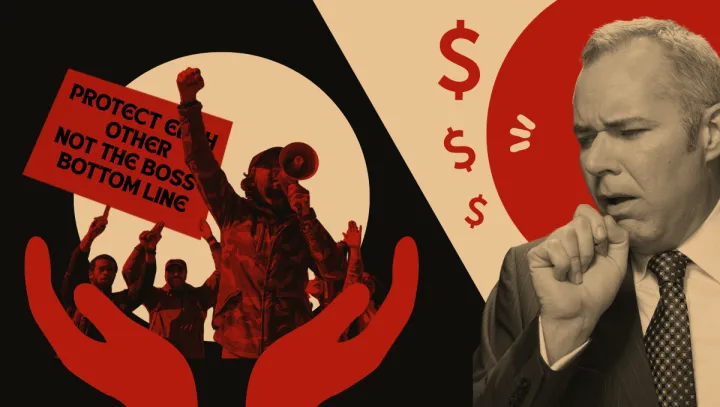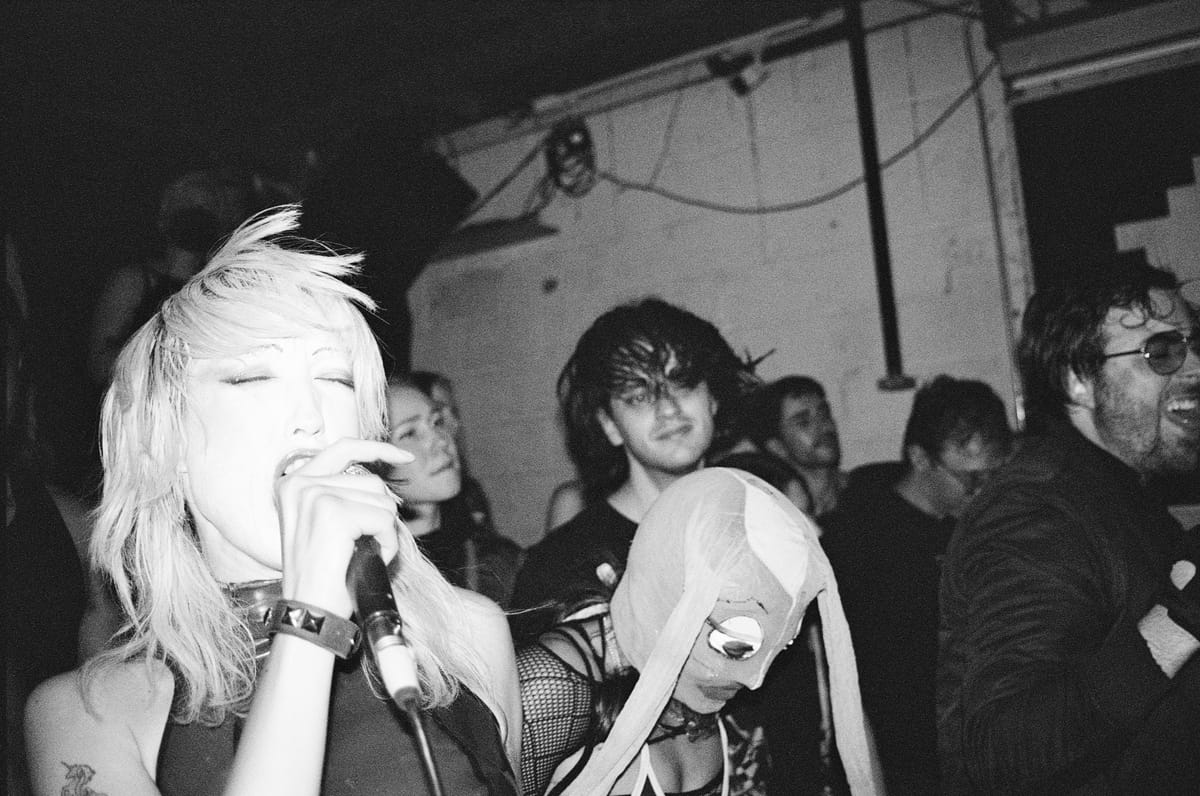
Slash Need Double Dog Dare You…
The first time I saw Slash Need perform, they were opening for synthpop outfit Ice Cream at their FED UP album release show in 2019. That night is burned into my mind for a number of reasons, but especially because Slash Need were totally arresting in what they did— a hard thing to accomplish when both Toronto crowds and performers have a reputation for being cold and dispassionate.
A visage of exaggerated and hypersexualized femininity, vocalist Dusty Lee strutted out in leather, fishnets, a breastplate of cartoonish proportions, and was covered in ghost white face paint. A league of dancers, clad in pantyhose masks danced along the stage and amidst the crowd as Lee weaved their way through the audience. At the time, I compared the experience to a bank robbery: it felt like Lee and their dancers were swarming us, but in doing so they captured the audience's attention and, most importantly, held it. If we just do what they say we’ll all be OK. Though an immense amount of work and practice had brought them to that point, what was remarkable about it all is how fully formed and thought out it felt then. In the years since, the group’s gone on to stake their claim as one of the most exciting acts around.
“I feel like that point was just the birth of the new era [of the band],” Lee explains. “That was us really connecting. That was me really connecting to where I wanted to see the band go. I think for that show, that was the first we ever did with dancers.” Today, Slash Need’s dancers, primarily Camille Jodoin-Eng and Stella Tago, are as much a part of the group as its songwriters, Lee and Alex Low. Roles that Lee likens to the Prodigy’s own foregrounding of dancers as part of their ensemble. “They're reminding people that the audience is just as much a part of the show as we are,” they explain.
Having lived in and worked in some of the city’s most storied DIY spaces, where people often live and perform in the same environment, it’s easy to understand how Slash Need are disinterested in upholding any traditional divides between performer and audience. Lee and Low met while living at DIY venue Double Double Land in the city’s Kensington Market, and Low and Tago both later lived at Soybomb before the space was evicted. While Slash Need is Lee’s first musical project, they have a longstanding relationship to the city’s scene through venues like DDL and the Holy Oak. Low also had longstanding connections to the scene, playing in groups like HUT with fellow Academy of Sciences graduates Dan Lee (Phèdre) and Daniel Woodhead (Moon King), Buzz Garage noisemakers HSY, as well as his own work as COLDBOI.
Hearing Slash Need’s Thankful React demos from 2019, recorded with founding member Maggie Smith, the core electronic pulse of the group’s sound, along with the intensity of Lee’s vocal performances are all there, but as they explain, it took Lee nearly moving to Berlin to really coalesce around an idea.
While playing some solo shows across Europe Lee felt incredibly homesick for Toronto and started watching videos taken at one of Will Munro’s storied Vazaleen parties from the early 2000s. “There's this video of the Hidden Cameras performing, and on stage there was a dancer who I learned later was Will Munro, in a full mummy costume during [their] performance,” Lee recalls. “And I just thought, ‘wow, that's such a great way to get people feeling more involved in the show.’ That's what we need. We need dancers, we need more people.”
The Hidden Cameras, El Mocambo, 2001
At that point, Lee had already been working through some ideas in their performance and costuming with the band. Acutely aware of their position as a vocalist and how oftentimes non-male vocalists are treated with the assumption that they don’t contribute much else creatively or know how to play any instruments, how they dress in their performances began as a way to reject those ideas. “That made me feel really frustrated and so I wanted to overexaggerate what that could look like. Like, ‘oh, I'm just a girl and I don't know what I'm doing.’ So I used to wear these giant wigs with a pantyhose mask that had big painted lips and big huge eyes and an expressionless face, and giant boobs and skimpy outfits.” When the idea to incorporate dancers into the performance came, it felt only natural to have them don similar pantyhose masks after Lee retired wearing theirs in favour of the white face paint, continuing the critique of objectification, but amplifying it. “Now we have these clones and multiples of me. Doubling like a virus,” they laugh.
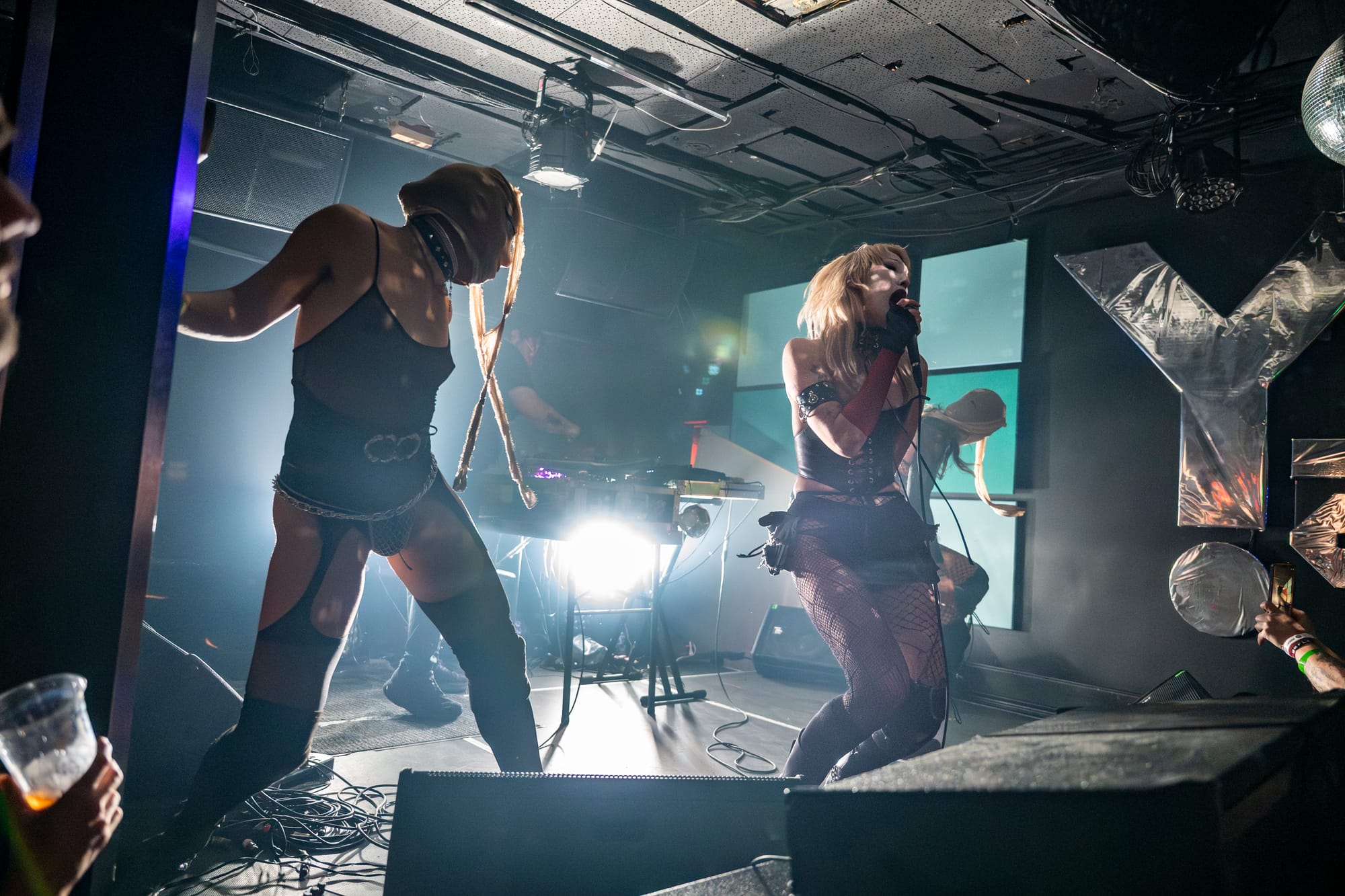
“I think some of my favorite moments in the sets are when I turn and see one of them, or both of them doing something crazy, like Stella’s ass is just up in the air and Camille's crawling on all fours like a little exorcist baby crawl,” they continue. While the dance troupe invariably raises some eyebrows, the desired effect is that these hijinks will inspire the crowd to similarly let loose. It’s leading by example, an invitation and a cue for everyone in the room to stop thinking of themselves as just spectators.
It’s also a sensibility that falls into a lineage of other local acts, from the S&M vaudevillian spectacle of Rough Trade, to Nash the Slash’s own nullification of identity through horror, to the genderfucking teaches of Peaches. Slash Need also regularly cite industrial pillars Skinny Puppy as sonic and visual influences, and are in many ways inheritors of Nivek Ogre’s haunted theatricality, and cEvin Key’s propulsive electronic polyrhythms.
The band’s debut album, SIT & GRIN collects a number of the singles they’ve released over the past couple of years as they’ve continued to evolve in sound and style. Album opener “Border Town” feels like an origin story of sorts, with Lee singing about growing up in a close-minded small town over a sinister bassline and insistent drum beat. The repetitive rhythm just builds and builds like a constant crescendo, until Lee’s vocal performance shifts from coyly spoken to a brash scream, as they yell the refrain: “I hate this body/ I had enough / I wanna leave / right in the dust.” It’s both deeply cathartic and affecting.
“It’s this feeling of frustration and a desire to exist beyond what it means to be stuck within that very claustrophobic worldview,” Lee explains about the song. “And to feel, like, maybe even a little alone in that, but just calling out for something more.”
The entire record leans heavily toward industrial and EBM influences, but also draws on hardcore punk (“Money”), and at times recalls the radical playfulness of Fever Ray’s recent work (“Worm”). Just as their performances strive to evade quick categorization, their music is equally mercurial and all the more exciting for it. Both Low and Lee’s contributions are remarkably elastic, strongly suggesting many different angles and approaches that the group can head in and embellish even further. The key to this elasticity is their attention toward building moments of great tension-and-release, an approach united in both their songwriting and performance.
“A little tease and denial,” Lee explains. “I think it can be very interesting to play with that dynamic and [to use your voice to] twist a bit of a story through your inflection and through how you are expressing an idea.” “I know that throughout this project I have been finding my voice and trying to work out what that sounds like to me and how it feels. I scream differently now than I used to,” they add. “My voice has moved and been shaped and developed over time, through use and through experience.” Lee and Low write collaboratively, writing all of the instrumentals together on a setup that includes a set of Roland SP-404 MKIIs, Korg Electribes, a Korg Minilogue, and Korg Volca Bass, to chip away at ideas through dialogue until both are happy with the results.
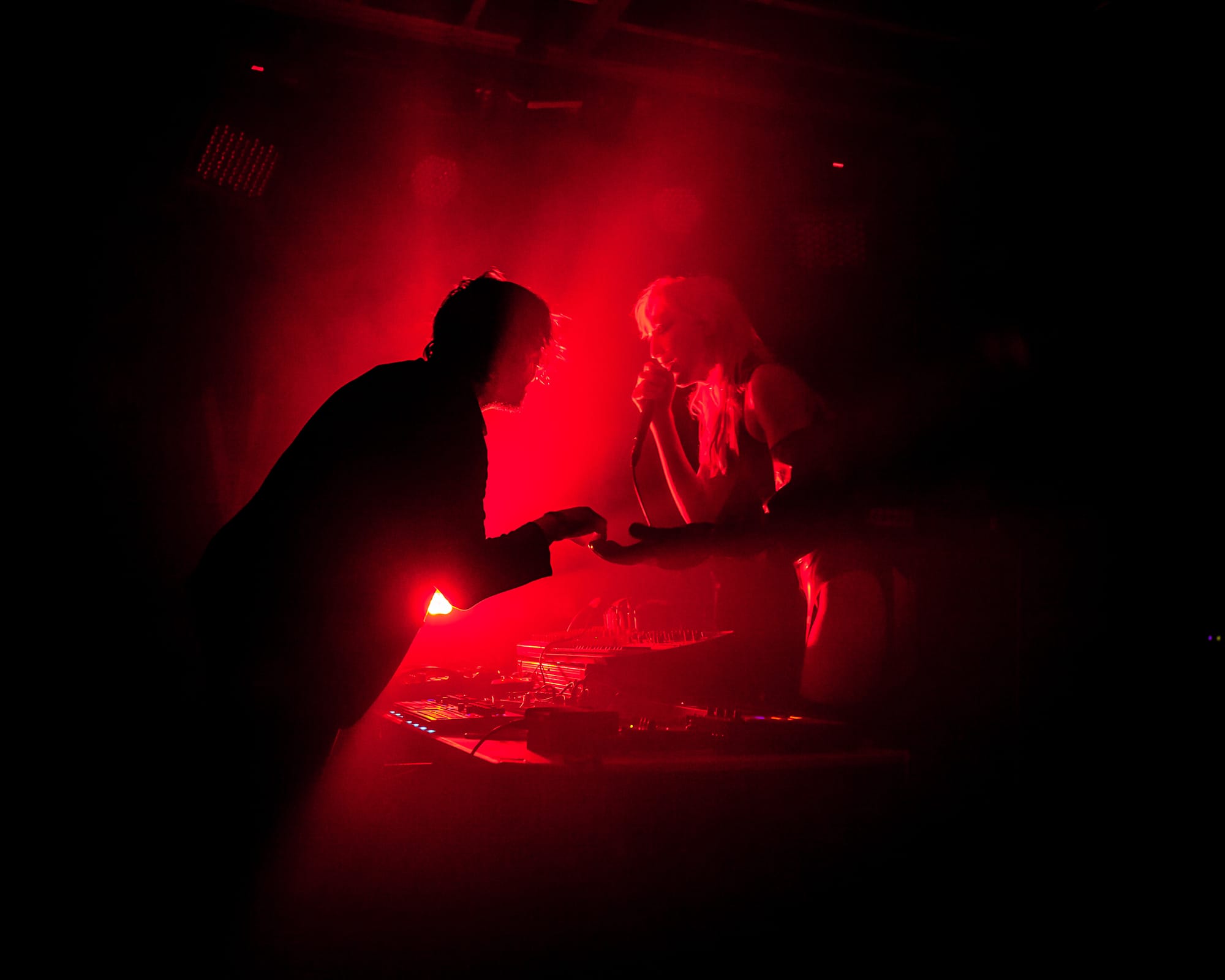
If SIT & GRIN charts Slash Need finding and stretching their voice and technical skills on record, the live show is where that tension-and-release instinct detonates in full. Slash Need treats every venue as raw material to be rearranged, invaded, and reclaimed. They’re not precious about how they do it, either. Usually just equipping some repurposed wedding arches, lights, a smoke machine, and a table. The dancers spill off the risers, Lee is just as likely to be howling from the middle of the floor as from the mic stand, and the audience gets folded into the choreography of it all. In that environment, the band’s extremity doesn’t feel confrontational so much as it starts to register as a kind of permission. The masks, the cartoonish bodies, the unhinged dancing, the hypnotic and incredibly danceable music, all of it opens up a space where it feels briefly possible to shed whatever you walked in carrying.
“We always talk about how we want to just help people forget about their day jobs for a few minutes, or just like, forget about the rent that they have to pay and just be able to think about something else, to find some release and some relief,” Lee says. That language of release circles back to the way Lee jokes about the dancers as “clones” of themselves, “doubling like a virus.” Each dancer, each exaggerated gesture, becomes another small transmission of the band’s ethos: no spectators, no safe distance, no neutral bodies in the room. Lately, Lee tells me, they’ve been thinking about pests. “I worked as an exterminator the past couple of years,” they explain. “We got evicted from our house and studio space, Soybomb, it was our studio space for years. It’s been like three or four legendary spaces that we've got to pass through and have as our home base. And just as an artist in Toronto you start feeling a bit like a cockroach.”
It’s a fitting image for a band who’ve spent their formative years slipping through Toronto’s DIY undergrowth, packing up and setting down in one precarious space after another. Like pests, they burrow into whatever venue will have them, remake it in their own image for a night, and then move on, leaving behind traces of themselves in the people who were there, little infestations of possibility.
Read more

New Feeling is 5
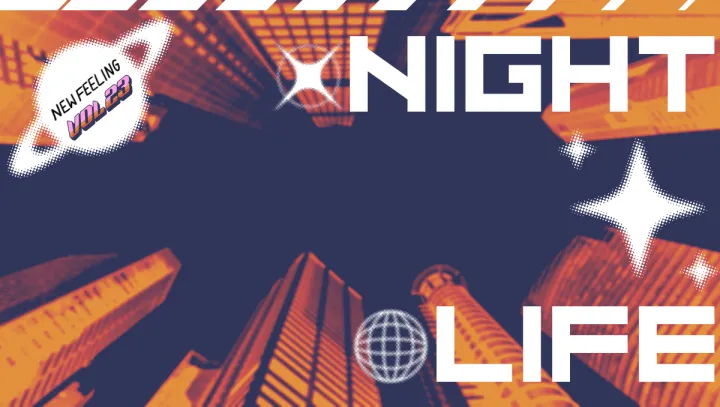
ISSUE 23: NIGHTLIFE
